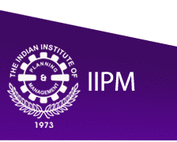Kalyanmoy Chatterjee defends the Indian MR Industry’s Growth and elaborates on its future progression in this discussionMarket research methodologies have evolved globally. What are the major changes you have observed in the past few years?The biggest challenge in India is our diversity. We have 22 official languages and 399 dialects. To do a pan-India study, the physical effort to reach various people is difficult. So until and unless you have a large infrastructure, you can’t do that. Globally, what has happened is that primary data collection by face to face interviews has been replaced by online and telephonic interviews. In most western countries, the data is collected from the web where they have large internet panels. In India, the internet penetration is high in terms of having the 3rd largest number of users but the normal consumers don’t use the internet as much. However, it is growing slowly. Today, we have 650 million plus mobile phone users, many of them are smartphone users. In the next 3 years, you will see many interviews being taken from mobile phones as well as online. It has started happening in India and has happened in many other countries. For example, in Japan, no one takes a face to face interview anymore. To what extent have Indian companies adapted to research techniques that leverage online media in the era of smartphones and social media? How has it evolved for GfK-MODE?In India, the market research industry in terms of technology is at par with global industry. It’s not as if we are doing a older generation market research. Online is picking up slowly and therefore the Indian market is now adapting to the online methodology. So whether it is an Indian company or an MNC; in India, they are using the same technology. Online is basically the method of collecting data. The basic research techniques and the statistical tools, which are used remain the same. For an example, earlier I used to go to you and take the interview; but today, I will contact you online. Because they are not face to face, there are certain constraints that remain. For instance, I can’t show you a sample, but you can see a visual online. As businesses face greater uncertainty, how have their expectations from MR firms changed?If you look at global uncertainty, in 2008-09, the west was bleeding. Business declined and people stopped recruiting. However, India was not that badly affected as Indian growth is led by our own consumption. And therefore, even if there is a slowdown in Europe or America, the impact on India would be much less. However having said that, there are global companies whose budgets were slashed by 10% in 2009-2010. Such things will happen but won’t affect the Indian MR industry in any major way. When it comes to client expectations nowadays, everyone wants things to be fast. Earlier they used to give us 6 month time spans to do a study and today, we get one month for the same. There are times when they want the answers in three days. People are looking at value addition to market research. MR actually started during the 1970s, when statisticians collected data scientifically. When we started in 1981, our positioning was that we are information scientists and not data collectors. So from the data, you need to take out the meaning, which will help clients take the right decision. That has become far more relevant today. For more articles, Click on IIPM ArticleSource : IIPM Editorial, 2011. An Initiative of IIPM, Malay Chaudhuri and Arindam chaudhuri ( Renowned Management Guru and Economist). For More IIPM Info, Visit below mentioned IIPM articles.IIPM ranked No 1 B-School in India
domain-b.com : IIPM ranked ahead of IIMs
IIPM: Management Education India
Prof. Rajita Chaudhuri's WebsiteIIPM in sync with the best of the business world.......Arindam Chaudhuri on Internet.....Arindam Chaudhuri: We need Hazare's leadershipProfessor Arindam Chaudhuri - A Man For The Society....IIPM: Indian Institute of Planning and ManagementPlanman Technologies
IIPM Contact InfoIIPM HistoryIIPM Think TankIIPM Infrastructure
IIPM InfoIIPM: Selection ProcessIIPM: Research and PublicationsIIPM MBA Institute India--------------------------------------------------------------------------------------------------------------------------
Shashank Srivastava points out that the company’s ability to keep launching products in line with consumer aspirations will remain a major plusMaruti Suzuki has been the leader in the small car segment for decades now. However, in light of the rising competition, how are you planning to protect your market share? How critical is the 50% mark for you?When many new players entered the Indian market in the mid-90s with the belief that the Indian consumer will gradually move towards bigger cars and launched sedans, we continued to invest in the small car segment. And the result is evident from the strong position that we hold in this segment. Today, the small car segment accounts for around 55-60% of the Indian automotive market and we believe that it will continue to hold a huge chunk till 2015-16 even after the industry will double up in terms of overall volumes. As far as our plans are concerned, we will continue to invest in this segment as we have been doing so far. Even after the competition started to increase in this segment with the launch of products like Santro and Matiz, it helped the overall volumes but we were able to hold a strong position in this segment and we have maintained it till date. In many major markets, the leader holds on an average a market share of 20-25% and the strong position of Maruti Suzuki in India is a result of our constant efforts to drive the growth of the industry. The 50% market share is important to keep the team on its toes and being able to sell half of the overall volumes surely gives a sense of pride to the employees. But from a company standpoint, it isn’t very important. The small car segment is different in many ways today as compared to what it used to be in the 1990s. How have you adapted with the times and do you believe that it has delivered the desired results?The biggest difference today is the number of choices that the consumers have. From the days when there were just a handful of options, there are more than 12 cars available in the premium hatchback segment alone to choose from. In short, the small car market is fragmented and there is a different car available for a different set of consumer. For instance, even after the success of Swift, we launched the Ritz, which is more of a family car and the TG is different as compared to the Swift buyer. While there were many doubts that were raised at the time of the launch, the fact is that Ritz grew at a faster pace compared to Swift in terms of overall volumes. In our portfolio, A-Star is for the young modern consumer but Alto is a car for consumers who are looking at value and fuel efficiency. Alto K10 is for a set of consumers who demand style apart from fuel efficiency in the product and the list goes on. Apart from launching new products in the small car segment, what are your plans to stay ahead of the competition in the coming times?Product is definitely going to be a major factor along with the brand. Maruti Suzuki has been a brand known for providing unmatched value. We will continue to invest in our brand. Over the past few years, apart from developing product-centric campaigns, we have also come up with campaigns for the brand, like the K-Series engine. One should not forget that apart from the price-point of the product, the ownership cost of the product also makes a lot of difference. We will be coming up with a brand campaign shortly that will talk about our wide service and sales network and we believe that these efforts will help us maintain our share amidst rising competition. We have been listening very carefully to our consumer and are always ready to tweak things accordingly. For more articles, Click on IIPM ArticleSource : IIPM Editorial, 2011. An Initiative of IIPM, Malay Chaudhuri and Arindam chaudhuri ( Renowned Management Guru and Economist). For More IIPM Info, Visit below mentioned IIPM articles.IIPM ranked No 1 B-School in India
domain-b.com : IIPM ranked ahead of IIMs
IIPM: Management Education India
Prof. Rajita Chaudhuri's WebsiteIIPM in sync with the best of the business world.......Arindam Chaudhuri on Internet.....Arindam Chaudhuri: We need Hazare's leadershipProfessor Arindam Chaudhuri - A Man For The Society....IIPM: Indian Institute of Planning and Management--------------------------------------------------------------------------------------------------------------------------
North america has for long been considered the epicenter of the mobile multimedia revolution. fair enough. But there are other geographies to be considered too. Besides, the launch of 4G and the explosion in mobile music, mobile TV, mobile gaming apps in recent years, have made this an arena where the outcome is no longer easy to predict – It’s a battle of markets and categories. understandable, when you’re talking about a $32 billion market turning into a $52.8 billion one by 2015. marketers, grab the chance. Mobile tv’s bright futureAccording to a recent report released by IE Market Research, the market for mobile entertainment, including mobile gaming, mobile music and mobile TV, is expected to grow at a compounded annual growth rate of 9.5% to reach $52.8 billion in 2015, with revenues from mobile music rising to $15.7 billion. However, among the different categories of mobile multimedia, Mobile TV is expected to script the biggest percentage growth in revenues over the next five years. As per forecasts, global mobile TV revenues (broadcast and unicast revenues) will increase from $2.52 billion in 2009 to $6.6 billion in 2015. A strong case for user baseIn terms of adding users, Mobile TV is expected to be the key driver for the mobile multimedia market. The category’s subscriber base is expected to swell at a CAGR of 21.7%, to 226 million users by 2015. However, the average spend per user is expected to decline at a CAGR of 5.2% during the period – this, given the competition amongst content and service providers. Nevertheless, the industry will see the mobile gaming arena gather storm in the years to follow, with as many as 633.9 million users by 2015. But the largest chunk of users will belong to mobile music, with 857 million users. For more articles, Click on IIPM ArticleSource : IIPM Editorial, 2011. An Initiative of IIPM, Malay Chaudhuri and Arindam chaudhuri ( Renowned Management Guru and Economist). For More IIPM Info, Visit below mentioned IIPM articles.IIPM ranked No 1 B-School in India
domain-b.com : IIPM ranked ahead of IIMs
IIPM: Management Education India
Prof. Rajita Chaudhuri's WebsiteIIPM in sync with the best of the business world.......Arindam Chaudhuri on Internet.....Arindam Chaudhuri: We need Hazare's leadershipProfessor Arindam Chaudhuri - A Man For The Society....IIPM: Indian Institute of Planning and Management--------------------------------------------------------------------------------------------------------------------------
|


 RSS Feed
RSS Feed